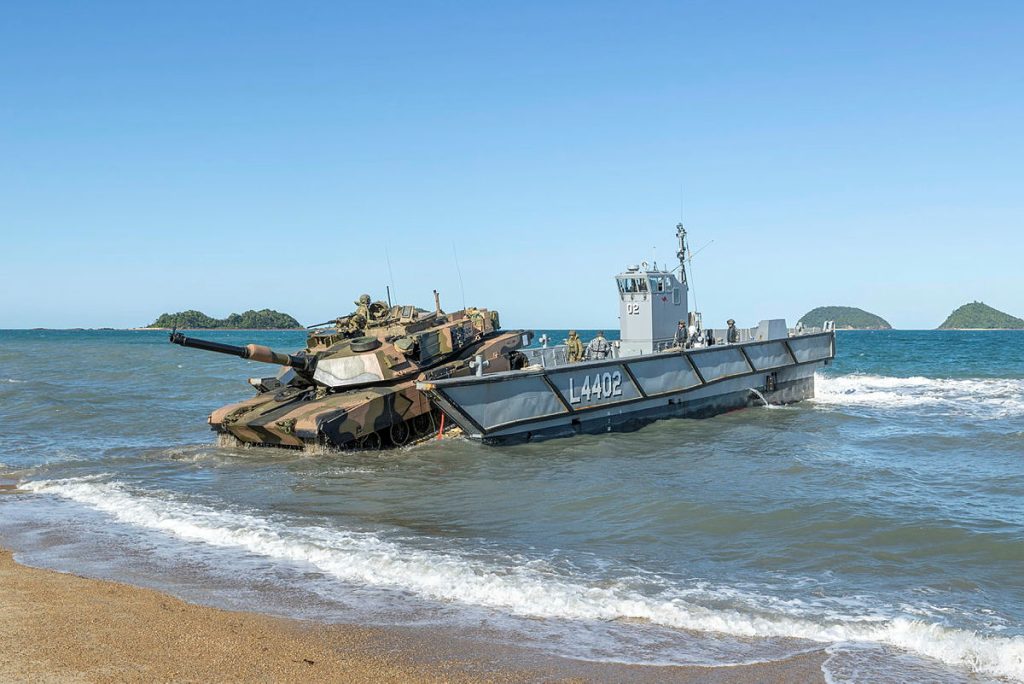Should Defence press ahead with its investments in next-generation land combat capability or is it time to reallocate resources elsewhere to reflect changes in modern warfighting?

Last month, the Albanese government launched the Defence Strategic Review, touted as the largest assessment of the Australian Defence Force’s structure, force posture and preparedness in 35 years.
According to the Terms of Reference, the review would include considerations of the “priority of investment” in Defence capabilities.
Led by former chief of the defence force, retired Air Chief Marshal Sir Angus Houston, and former Labor defence minister Stephen Smith, the review aims to “identify and prioritise” the estate, infrastructure, disposition, logistics and security investments required to “provide Australia with the Defence force posture required by 2032-33”.
This would involve considering “all elements of the Integrated Investment Program” and issuing recommendations for “the program’s reprioritisation” in response to recently announced “large-scale projects”.
The leads have been tasked with outlining the investments required to support Defence preparedness and mobilisation needs to 2032-33, as well as the associated funding needs.
Recommendations are due to be handed down in March 2023 in time for the National Security Committee of Cabinet.
The launch of the review has sparked debate over Australia’s procurement priorities, with some observers calling for a radical restructure of the ADF’s force posture to reflect changes in warfighting.
This has included concerns over the Commonwealth’s investments in next-generation land and amphibious combat capability, particularly the planned purchase of a fleet of M1A2 Abrams tanks and the $18-21 billion acquisition of infantry fighting vehicles under the LAND 400 Phase 3 project.
But according to Shane Caughey, retired Major General of the Australian Army, the nature of Australia’s engagement in a future conflict remains uncertain.

As such, he contends land combat obsolescence claims are premature.
“The only certainty about such a war is that it will be characterised by uncertainty, and that nations are poor at predicting what is required,” Caughey writes in ASPI’s The Strategist: The certainty of uncertainty: why Australia needs a flexibile defence force
He cites former US Defense Secretary Robert Gates, who once told West Point cadets: “When it comes to predicting the nature and location of our next military engagements, since Vietnam, our record has been perfect. We have never once gotten it right.”
Caughey acknowledges the recent focus on acquiring high-end air, maritime and long-range strike capabilities, accepting they’re “essential to deter a potential adversary”.
“Integrated with effects from space and cyber, they will help the ADF hold an enemy at risk from afar and, if necessary, degrade that adversary’s anti-access/area denial (A2/AD) envelope,” he writes.
However, Caughey claims while essential, such capabilities are “incomplete and lack the capacity to compel an adversary to submit”.
Caughey argues dependence on long-range strike capability would represent a contemporary form of “attrition warfare”.
“The trap for force structure planners is to be enticed by the concept that future conflict can be won by focusing on technologies that provide the opportunity to empty the battlespace, negating the requirement for forces to manoeuvre so that they can close with and destroy an enemy,” he adds.
Caughey claims the history of warfare suggests combatants must have the capacity to “apply land power” to succeed in conflict.
“The first Gulf War, the overwhelming superiority in stand-off weapons was insufficient to force Iraqi forces to withdraw from Kuwait,” he continues.
“It was only when the US-led coalition was able to manoeuvre a ground force to close with and engage in joint land combat that Iraqi forces were evicted from Kuwait.
“Conversely, the conflicts in Vietnam and Afghanistan demonstrated that superiority in technology and firepower cannot guarantee victory against an enemy that is afforded a haven away from ground combat, where it can regenerate despite aerial bombardment and attacks with stand-off weapons.”
Caughey goes on to address criticisms of warfighting strategies involving the deployment of heavy armoured vehicles in the face of A2/AD threats and anti-armour capabilities.
He notes critics typically point to the Azerbaijan–Armenia conflict of 2020 or Russia’s experiences in Ukraine as evidence of obsolescence.
But for Caughey, these experiences reflect “poor tactical deployment and training”, rather than the effectiveness of the deployed platforms.
Accordingly, Caughey holds that conflicts should be viewed as “evolving campaigns” with “different mixes of capabilities required at different times”.
Future conflicts, he adds, would evolve based on the “changing fortunes of the belligerents”.
Caughey continues: “Force structure planners must consider the requirements of the ADF through a broad campaigning construct that will evolve over time.
“The ADF must be able to operate effectively in all domains, adjusting its mix of force as the nature of the campaign evolves.
“It must maintain and enhance its ability to manoeuvre through the sea, air and land gap to Australia’s north.”
Caughey stresses that while continued investment in long-range capabilities is essential, “conflict has always been, and will always remain, a contest of human will”, requiring forces to “close and engage in violent and brutal land combat”.
“Accordingly, the ADF will require the capacity to tactically manoeuvre land combat power to close with and destroy the adversary or defend against an adversary’s manoeuvre,” Caughey writes.
“With this understanding, the ADF must continue to invest in land forces. An ADF with ready land combat forces ensures it can meet a key principle of war, flexibility. This will enable it to respond with credible military force to a range of challenges as a military campaign evolves.
“Given the emerging security environment, now is not the time to limit Australia’s force structure options.”
Caughey concludes that to “compel an adversary into submission”, the ADF must have the capacity to “manoeuvre a truly integrated joint force”.
This would include “lethal, protected, mobile and connected land forces”, capable of “fighting aggressively and winning conclusively in joint land combat”.
Source: Defence Connect Reporter Charbel Kadib – 13 September 2022
Get involved with the discussion and let us know your thoughts on Australia’s future role and position in the Indo-Pacific region and what you would like to see from Australia’s political leaders in terms of partisan and bipartisan agenda setting in the comments section below, or get in touch with [email protected], [email protected], or at [email protected].
